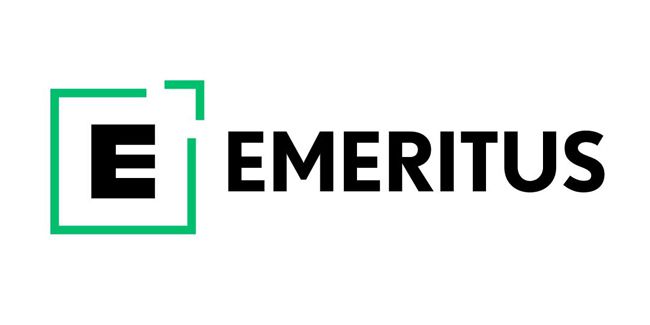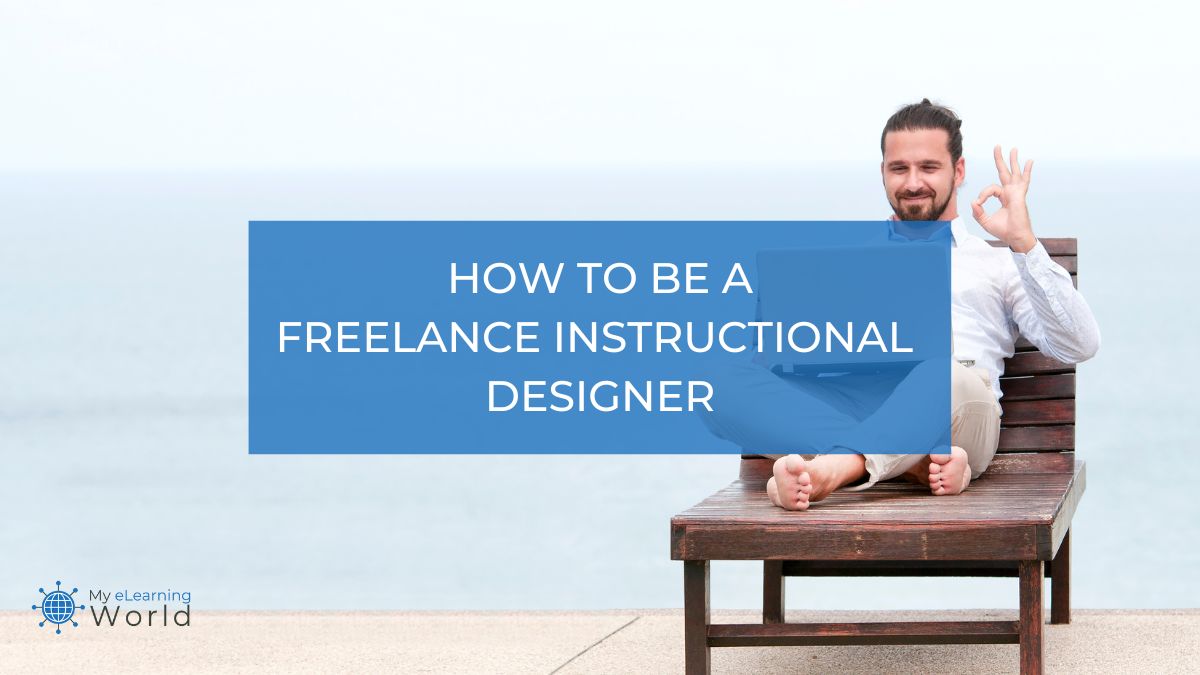If you’re trying to become an instructional designer, there are several different paths you can take. You could get a typical 9 to 5 job working for a corporation, the government, an educational institution, or any number of other organizations. Or you could go the route that I’ve come to love — being a freelance instructional designer.
Becoming a freelance instructional designer gives you freedom, flexibility, and control over your own destiny as you run your own business. But while freelancing offers a ton of attractive perks, I can tell you firsthand that it’s not an easy road and it’s certainly not for everyone. Success definitely isn’t guaranteed.
Having said that, there are some tips I’ve learned over the last 20 or so years I’m going to share with you that can increase your chances of not only succeeding but thriving if you want to be a freelance instructional designer, including how you can build essential skills with the Professional Certificate in Instructional Design from Emeritus.
Tips to Become a Successful Freelance Instructional Designer
1. Build a Strong Portfolio
I’ve talked at length on this site about how compelling instructional design portfolio is your ticket to attracting high-paying clients.
Make sure to include a variety of projects that demonstrate your skills in different aspects of instructional design. This could range from eLearning modules to interactive videos and gamified learning experiences.
Don’t just show what you’ve created, also include the impact your designs have had. This could be in the form of improved learning outcomes, positive client feedback, or measurable business results.
I also recommend regularly updating your portfolio with your latest and greatest work. This not only shows your current skill level but also your commitment to staying relevant in the field.
2. Effective Marketing and Networking
As a freelancer, marketing yourself effectively is crucial. Here’s what has worked for me:
Use platforms like LinkedIn to showcase your expertise, share your work, and connect with potential clients and other professionals in the field.
You should also consider starting a blog or a YouTube channel where you share insights about instructional design. This positions you as an expert and can attract clients.
Lastly, if you can do it, attend industry events and webinars, and don’t shy away from introducing yourself and your services. Word-of-mouth referrals are incredibly powerful in the freelance world.
3. Get Your Pricing Dialed In
Determining your rates is a balancing act.
Here’s my approach:
- Research Market Rates: Understand what other freelancers in your field and region are charging. This gives you a baseline to work from.
- Value-Based Pricing: Set your rates based on the value you bring to a project. If you have specialized skills or extensive experience, don’t be afraid to charge accordingly.
- Price for the Client You Want: One of the lessons I’ve learned over the years is that your pricing attracts the type of client you get. If you use dirt cheap pricing, you’re going to find yourself stuck getting low quality clients time and time again. Don’t be afraid to set rates that will attract the kind of client you want. It can be scary to raise rates, but in my experience, it pays off in the long haul as quality clients beget more quality clients.
- Be Transparent and Flexible: Clearly communicate your rates to potential clients and be open to negotiation, especially for larger or long-term projects.
4. Client Relationship Management
Maintaining good relationships with clients is key to a successful freelance career.
Here’s how I manage my client relationships:
- Prioritize Effective Communication: There’s nothing clients hate more than a freelancer who doesn’t keep the lines of communication open. Don’t disappear for days or weeks at a time with no contact. Keep clients updated on project progress and be responsive to their queries and feedback.
- Exceed Expectations: Aim to deliver more than what’s expected. Always under promise and over deliver. This could mean delivering ahead of schedule or adding extra value to your work.
- Follow-Up: After completing a project, follow up with the client to ensure they’re satisfied. This can lead to repeat business and referrals.
5. Streamline Annual Expenses
One of the keys to maximizing your earnings as a freelance instructional designer is effectively managing your expenses.
It’s crucial to streamline your annual costs, particularly when it comes to the tools and resources you use regularly. Believe me those expenses can add up fast.
Here’s how I approach it:
- Evaluate and Invest in Essential Tools: Carefully assess the tools that are essential for your work. Invest in software that enhances your productivity and quality of output, like advanced authoring tools or project management software. However, avoid unnecessary expenses on tools that don’t significantly contribute to your work.
- Subscription Management: Keep track of all your subscriptions. Regularly review them and cancel those that are not essential. Consider annual subscriptions for tools you use frequently, as they often come at a discounted rate compared to monthly plans.
- Leverage Free and Open Source Tools: There are many high-quality, free, or open-source alternatives to expensive software. Explore these options and integrate them into your workflow where appropriate.
- Negotiate with Vendors: Don’t hesitate to negotiate prices with software vendors, especially if you’re committing to a long-term subscription. Many are willing to offer discounts to secure a loyal customer.
By carefully managing your expenses, you can significantly increase your net income, making your freelance instructional design business more profitable.
6. Accept Multiple Payment Methods
I’ve found that being flexible with payment methods can open doors to a wider range of clients.
Here’s why and how you should diversify your payment options:
- Expand Your Client Base: By accepting various payment methods, including international payment platforms, you can work with clients from around the world, broadening your market reach.
- Convenience for Clients: Different clients have different preferences for payment. Offering multiple options makes it easier for them to do business with you.
- Quick and Secure Transactions: Utilize reliable and secure payment platforms that ensure quick processing of payments, helping you maintain a steady cash flow.
7. Stay on Top of Trends with Ongoing Training
The eLearning industry is constantly evolving, and staying updated with the latest trends and technologies is crucial.
Here’s how I ensure I’m always at the top of my game:
- Continuous Learning: Successful freelancers are always focused on keeping their education up to date and developing their ID skills. You could always take online courses in instructional design, instructional design bootcamps, or workshops.
- Networking and Industry Events: Attend industry conferences and networking events. These are great opportunities to learn from peers and stay informed about the industry’s direction.
- Reading and Research: Dedicate time to read industry blogs, journals, and books. This habit keeps you informed about the latest developments in instructional design.
By following these strategies, you can position yourself as a top-tier freelance instructional designer, capable of commanding higher rates and attracting a diverse range of clients.
Build the Skills You Need to Thrive as a Freelance Instructional Designer with Emeritus
 Emeritus Professional Instructional Design Certificate | Online Certificate Course
Emeritus Professional Instructional Design Certificate | Online Certificate Course
Gain firsthand expertise in instructional design principles and methodologies through this unique Professional Certificate program. Create impactful learning solutions and improve people's ability to learn.
The next class kicks off on October 22, 2024, so don't miss your chance to enroll now! Take advantage of early bird discounts leading up to the kickoff date:
20% off until September 3
15% off until September 24
10% off until October 15
If you’re trying to build a freelance career in instructional design, the Professional Certificate in Instructional Design from Emeritus is something I highly recommend.
This five-month course comprehensively covers the essentials and dives deep into all facets of instructional design.
As the demand for skilled instructional designers climbs, this program helps you build the necessary expertise to thrive in this expanding field.
You’ll explore how to integrate technology with teaching methodologies and develop tailored training solutions for both corporate and academic environments.
However, the benefits of this program go beyond just skill acquisition.
Because this is a cohort-style online course, Emeritus offers a vibrant environment to build lasting connections with peers and mentors, significantly expanding your professional network.
By joining the Emeritus community, you become part of a supportive network of professionals all striving to excel in instructional design.
Click here to discover more about the program and to request a free brochure.
Useful Resources
- Instructional Designer Job Description
- Instructional Design Masters Programs
- Instructional Design Certificate Programs
- How to Write an Instructional Design Cover Letter
- Common Instructional Designer Interview Questions
- Instructional Design Salary Statistics
- Instructional Design Resume Tips
Final Thoughts
Going the freelance route as an instructional designer is both exciting and challenging. The most successful freelancers have a great balance of creativity, technical expertise, and business acumen.
I encourage you to take these insights and apply them to your journey. The world of instructional design is vast and ever-evolving, and there’s a place for you to make a significant impact while achieving your financial goals.
It won’t always be easy, but if you stick with it and apply the tips above, the rewards could be immense. Here’s to your success in creating engaging, effective learning experiences and building a thriving freelance career!
- Elevating Your Virtual Presence: Why EMEET’s SmartCam S800 Stands Out in Modern Communication - 06/04/2025
- US Teachers Will Spend $3.35 Billion of Their Own Money on Classroom Expenses in 2025-25 School Year - 06/04/2025
- Report: Leveraging AI Tools Could Help US Teachers Avoid $43.4 Billion of Unpaid Overtime Work - 06/04/2025



